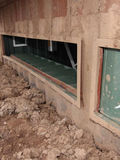

THE NEWEST PIECE OF HISTORY
We are thrilled to introduce a completely new experience for photography enthusiasts and wildlife lovers alike launching in 2024.
A unique underground sleep-out hide that allows you to observe and photograph the nocturnal species of Mashatu Game Reserve.
With innovative lighting, our tried and trusted underground hide expertise, and a comfortable suite to relax in - you can now create incredible never-before-seen images from dusk till dawn.










OUR TEAM
PhotoMashatu has resident wildlife photographers based at Main camp to help guests with their photography when they are at camp. Guests can hire out the use of the photographer to join them on game drives as well as for the photographic hides. Read more about who they are and how they can enrich your experience at PhotoMashatu.

Our Story
Wildlife photography in Africa is typically done from open vehicles, where photographers drive through reserves searching for animals to capture. While this method can produce spontaneous images, the unpredictable factors of light, terrain, and the animal’s reaction often limit opportunities for intimate shots.
To address this, Shem Compion envisioned creating photographic hides near South Africa’s urban centers, allowing international clients to relax while capturing wildlife from the hides. The perfect location was found at Mashatu Game Reserve, a place renowned for its photographic potential, including excellent predator and elephant sightings. In 2011, plans for the first underground hide at Mashatu were set in motion.
Building the hide required meticulous planning. A shipping container was sourced from Oodi, Botswana, and with the help of local artisans, it was converted into a sturdy, underground photographic hide. After overcoming logistical challenges, the hide was successfully installed at Mashatu, attracting both wildlife and photographers. Over the years, the hide has grown in popularity, leading to its expansion in 2018 to accommodate up to 8 photographers.
With the success of the Matebole hide, we have now introduced the Lala Limpopo Sleep-Out Hide, a unique overnight experience. This innovative hide allows photographers to capture nocturnal wildlife from ground level with adjustable lighting, creating opportunities for stunning images from dusk till dawn. Accommodating 4 guests, the Lala Limpopo hide offers a truly immersive photographic experience, ensuring Mashatu remains a premier destination for wildlife photographers.

DID YOU KNOW
WE ARE A PROUD PRODUCT OF C4 GROUP OF COMPANIES
Born from C4 Photo Safaris dedication to wildlife photography,Photo Mashatu was born as a distinct photographic entity in 2011. At its core, Photo Mashatu has the Matebole hide - an underground hide with incredible wildlife viewing a few meters from you. Many award winning images have been taken in the hide, so its photographic resume is strong. Yet it is the experience of being so close to animals large and small that is so captivating. Being in a hide at eye level and close proximity to animals is a window into another world - one where the animals come towards you.
















